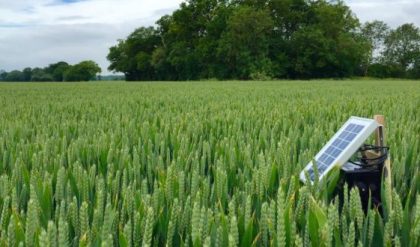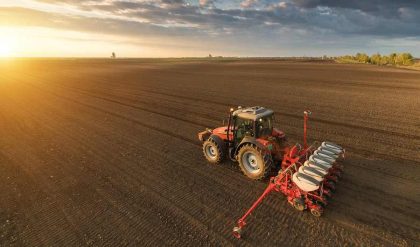This chapter deals with the application of various engineering properties like physical, frictional, aerodynamic, thermal, optical, dielectric, electrical, acoustic, rheological and textural properties in the harvesting, post harvest handling, processing, storage and how it affects consumer’s perception of food quality and safety.
INTRODUCTION
The engineering selection and design of food processes and equipment requires knowledge of the properties of food materials. These properties are of great importance in the simulation and design of food processes and in the computer-aided process engineering. Their influence is even greater in problems of conceptual design, in which a wrong estimation of a property can lead to an infeasible design plan. Not only the knowledge of properties aids in engineering design and control but also gives information about the product quality, its acceptability by the consumer of different groups and its behavior post production, during storage, during consumption and post consumption.
PHYSICAL PROPERTIES:
The knowledge of some important physical properties such as shape, size, volume, surface area, thousand grain weights, density, and porosity of different grains is necessary for the design of various separating, handling, storing and drying systems. The function of many types of machines is influenced decisively by the size and shape of the fruit participating. The size and shape are, for instance, important in their electrostatic separation from undesirable materials and in the development of sizing and grading machinery. Bulk density, true density, and porosity (the ratio of intergranular space to the total space occupied by the grain) can be useful in sizing grain hoppers and storage facilities; they can also affect the rate of heat and mass transfer of moisture during aeration and drying processes; Density is used to separate materials with different densities or specific gravities. Separation of properly matured peas can be separated from the immature and infected ones by water flotation methods. Grain bed with low porosity will have greater resistance to water vapor escape during the drying process, which may lead to higher power to drive the aeration fans. Cereal grain densities have been of interest in breakage susceptibility and hardness studies. For instance, bulk density values for raw and parboiled paddy have practical applications in the calculation of thermal properties in heat transfer problems, in determining Reynolds number in the pneumatic handling of the material, and in separating the product from undesirable materials. It plays an important role in other applications that include the design of silos and storage bins and the maturity and quality of paddy, which are essential to grain marketing. The resistance of bulk grain to airflow is in part a function of the porosity and the kernel size.
FRICTIONAL PROPERTIES:
Frictional properties such as angle of repose and coefficient of friction are important in designing equipment for solid flow and storage structures and the angle of internal friction between seed and wall in the prediction of seed pressure on walls. The coefficient of static friction plays also an important role in transports (load and unload) of goods and storage facilities. It is important in filling flat storage facility when grain is not piled at a uniform bed depth but rather is peaked. Coefficient of friction is important in designing storage bins, hoppers, chutes, screw conveyors, forage harvesters, and threshers. The material generally moves or slides in direct contact with trough, casing, and other components of the machine. The various parameters affect the power requirement to drive the machine. The frictional losses are one of the factors, which must be overcome by providing additional power to the machine. Hence, the knowledge of coefficient of friction of the agricultural materials is necessary.
AERO AND HYDRO-DYNAMIC PROPERTIES:
The aerodynamic properties and hydrodynamic properties like terminal velocity and drag coefficient of agricultural products are important and required for the designing of air/ hydro conveying systems and the separation equipment. The physical properties, such as density, shape, size, etc., are required for calculating the terminal velocity and drag coefficient of the agricultural produce. In the handling and processing of agricultural products, air is often used as a carrier for transport or for separating the desirable products from unwanted materials, therefore the aerodynamic properties, such as terminal velocity and drag coefficient, are needed for air conveying and pneumatic separation of materials. As the air velocity, greater than terminal velocity, lifts the particles to allow greater fall of a particle, the air velocity could be adjusted to a point just below the terminal velocity. The fluidization velocity for granular material and settling velocity are also calculated for the body immersed in viscous fluid.
THERMAL PROPERTIES:
These properties are involved in almost every food processing operation. Knowledge of the thermal properties of foods is essential in the analysis and design of various food processes and food processing equipment involved in heat transport, with respect to heat transfer or energy use, such as in extrusion cooking, drying, sterilization, cooking etc. The most important thermal properties in food processing such as, specific heat capacity (Cp), thermal conductivity(k), and thermal diffusivity(a). Specific heat has an important role in determination of energy cost and for the dimensions of machinery and equipment that are needed in thermal processes. Furthermore, specific heat (Cp) of food materials changes according to their physical and chemical properties. The thermal conductivity (k) of food determines how fast heat can be evenly transferred to the entire food mass, which in turn affects the quality of the final product. When heating and cooling of materials involves unsteady state or transient heat conduction, the material temperature changes with time and knowledge of the thermal diffusivity (a) is required for predicting temperature in these processes.
OPTICAL PROPERTIES:
Light transmittance and reflectance properties of agricultural commodities are used for sorting, grading, maturity, surface colour and blemish determination. The use of hyperspectral, multispectral, infrared imaging and computer vision system have enabled even determination of moisture and other chemical composition, contamination of agro commodities to greater satisfaction of consumer and trader and reduced the manual inspection, which might be subjected to error due to fatigue. These systems offer the potential to automate manual grading practices and thus to standardize techniques and eliminate tedious inspection tasks. The automated inspection of produce using machine vision not only results in labour savings, but also can improve inspection, objectivity.
DIELECTRIC PROPERTIES:
Dielectric properties play a major role in determining the interaction between the food material being processed and the electromagnetic energy. The degree of heating of a food material subjected to microwave or radio frequency processing is strongly influenced by the dielectric properties of the food. Dielectric heating or volumetric heating occurs due to polarization and ionization of molecules, which are effectively used in drying, sterilization, pasteurization and other thermal processing operations. Dielectric properties consist of dielectric constant (ε′) and dielectric loss factor (ε″). Dielectric constant is a measure of the ability of a material to store electromagnetic energy whereas dielectric loss factor is a measure of the ability of a material to convert electromagnetic energy to heat. Loss tangent (tan δ), a parameter used to describe how well a product absorbs microwave energy, is the ratio of ε″ to ε′. A product with a higher loss tangent will heat faster under microwave field as compared to a product with a lower loss tangent.
ACOUSTIC PROPERTIES:
Acoustic properties of biomaterial describes how the biological cell recats to sound waves, which carry enough energy through photons and capable of bring change in the product. Acoustic properties are long been used in medical diagnosis; its’ use in food processing and in detecting the imperfections in agro commodities is gaining momentum. Moreover, the effect of high intensity sound waves on living cell also are being explored and effectively used in homogenizing liquid sample, extraction of plant materials and as pretreatment for drying and dehydration process. Ultrasound is the sound that is above the threshold of the human ear (above 18 kHz). Ultrasound is generated with either piezoelectric or magnetostrictive transducers that create high-energy vibrations. These vibrations are amplified and transferred to a sonotrode or probe, which is in direct contact with the fluid. Some known applications of high power ultrasound in agro- processing include the following: extraction (release of plant material), emulsification, homogenization, crystallization (formation of smaller ice crystals in freezing), filtration, separation, viscosity alteration, defoaming, a pretreatment for drying and extrusion. Ultrasound inactivates enzymes and bacteria by breaking the cell membranes due to the violence of cavitation and due to the formation of free radicals and hence used for pasteurization and blanching.
ELECTRICAL PROPERTIES:
Some electrical properties which are of importance in agro processing are electrical conductance, resistance, impedance. Electrical conductance or capacitance has been used for determining the moisture content of grain. Electrostatic separation of grains is also used for separating grains, based on the ability of the grain to hold electrostatic charge. Electrical conductivity of the grain decides the ability of the material to hold electrostatic charge. Recently ohmic heating has been in use for drying, pasteurization, blanching and other thermal processing of foods, based on resistance heating. Ohmic processing, sometimes described as resistive heating, consists of passing mains alternating current directly through a conductive food, which in turn leads to heat generation. Because heating accompanies the current; heat distribution throughout the product is far more rapid and even, which in turn can result in better flavor retention and particulate integrity compared to conventional processes. The efficiency of ohmic heating is dependent on the conductive nature of the food to be processed and hence knowledge of the conductivity of the food as a whole and its components is essential in designing a successful heating process.
RHEOLOGICAL PROPERTIES:
Knowledge of the rheological and mechanical properties of various food systems is important in the design of flow processes for quality control, in predicting storage and stability measurements, and in understanding and designing texture. The rheological behavior under limited deformation has been widely used to obtain information on the structure and viscoelasticity of materials. An understanding of flow behavior is necessary to determine the size of the pump and pipe and the energy requirements. The rheological models obtained from the experimental measurements can be useful in design of food engineering processes if used together with momentum, energy, and mass balances. Effects of processing on rheological properties must be known for process control.
TEXTURAL PROPERTIES:
Texture is one of the most important quality characteristics of foods. Foods have different textural properties. These differences are caused by inherent differences due to the variety difference, differences due to maturity, and differences caused by processing methods. Food texture can be evaluated by sensory or instrumental methods. Sensory methods need a taste panel containing trained panelists. It is hard to repeat the results. Instrumental methods are less expensive and less time consuming as compared to sensory methods.





Comments are closed.